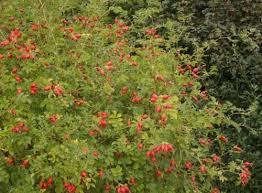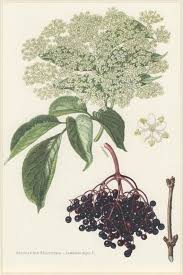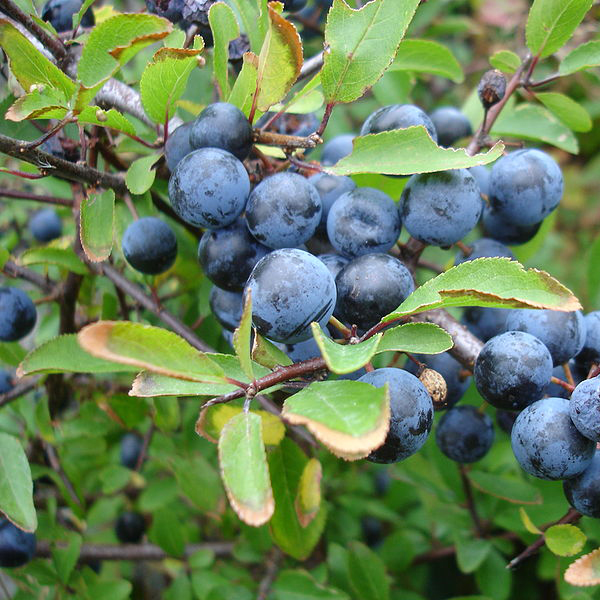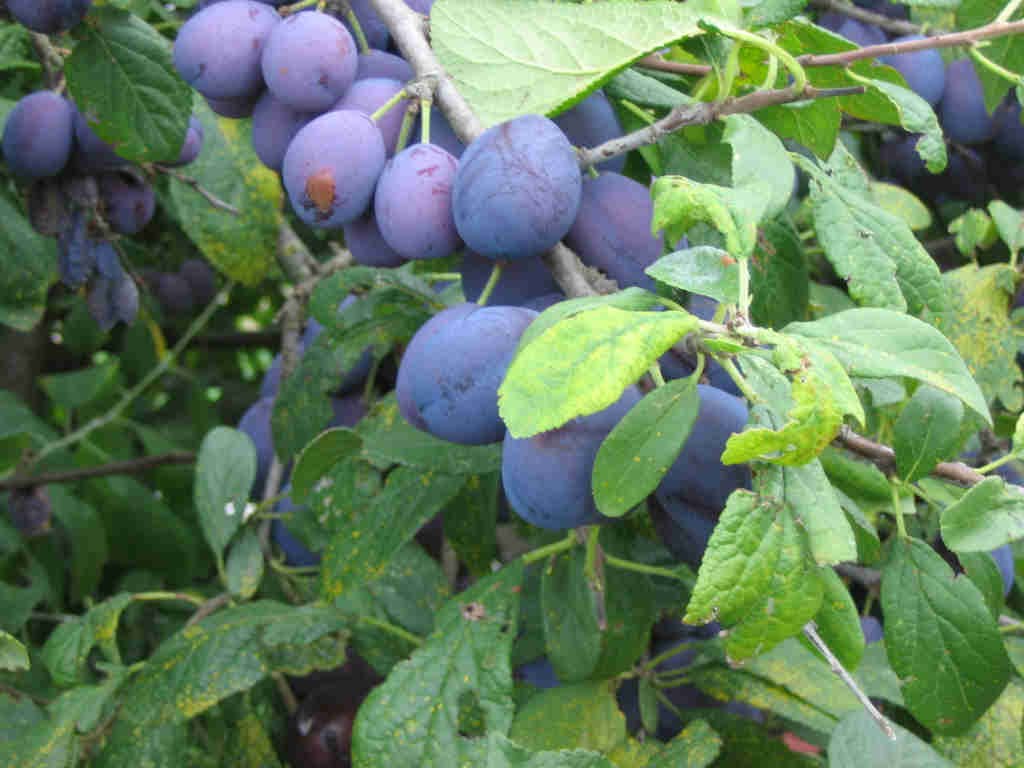With the success of my spring and summer forages I am keen not to miss out on the delights in store for me in the autumn hedgerows.
Now is the perfect time to locate and get ready to stock up on some of these great foods, to bottle and preserve for when it feels like it will never be summer again!
To me, foraging for autumn berries and turning them into syrups, shrubs and cordials is the equivalent of stocking my medicine cabinet with cold remedies, except I am being proactive by boosting my immune system rather than trying to rebuild it.
Autumn berries such as elderberries and rose hips have long had a health- boosting reputation as they are vitamin and nutrient packed. Both are said to be antiviral and immune stimulating herbs and as such, I believe, a wonderful addition to my pantry during the cold and flu season.
Having made delicious elder flower cordial, wine and champagne from the Elder's summer bounty, I am now waiting for its elder berries that will ripen during autumn and be perfect for making jellies, syrups and wine. As elderberries are not grown commercially if you want fresh berries you have to be prepared to go foraging. For me this makes the idea of foraging more exciting and special. I have already located the trees I will pick them from. Throughout summer I will check on their progress watching the white frothy flowers ripen into hanging clusters of small purplish- black berries.
Of course it is not just the Elder that offers up opportunities for foraging.
During my summer woodland walks I will be also looking out for Dog Roses (Rosa Canina) that will produce edible rose hips to transform into rose hip syrup, cordials, jellies and jams. My grandmother used to make rose hip syrup during the second world war as they are rich in vitamin C and were a useful substitute for citrus fruit at that time. My mother remembers being paid 3d a pound as part of a government programme to pick rose hips, a fortune in those days. Today the use of rose hips can seen to be beneficial to our health, especially in helping to support our immune system.
Damsons and sloes are also on my foraging list for Autumn. Although not medicinal in the truest sense of the word, they do make a lovely addition to gin!
Blackthorn trees were traditionally used in boundary hedging around the country so are mostly found as part of hedgerows. Sloes are the fruit of the blackthorn tree, and as it name suggests the branches are covered in sharp spines. It is recommended you pick sloes after the first frost, but by then it may be too late as they may have been gobbled up by hungry birds. You can of course beat the birds to them by picking them and putting them in your freezer for a spell instead!
It is also worth keeping a look out for damson trees too during the summer. Their fruit looks much like sloe berries, except slightly larger (and, mercifully, surrounded by fewer prickly thorns). Bullace plums are similar in appearance, and also delicious. Both can be substitued for sloes when flavouring spirits such as vodka, whisky and gin, in perparation for the winter festivities.
sloe, damson and bullace fruits
Hawthorn is another must have on my Autumn foraging list. It makes a delicious jelly that can be enjoyed with cheese or meats and makes an excellent addition to a Christmas hamper. Haws also lend themselves to making a rich Chinese style hoisin dipping sauce and ketchup that can be served with rich meats such as venison or slow-roasted pork belly. I also love it drizzled over Welsh rarebit as a winter warming lunch or an Autumnal nut roast, served with a crisp green salad.
Hawthorn is a foragers mainstay as young leaves, flowering tops and berries can all be harvested.
My final favourite wild food to forage in the Autumn is the small, vivid red fruits of the Rowan tree (also known as mountain ash). These hang in clusters, which makes them easy to spot from a distance and have long been used as a sweet and sour accompaniment to meat, especially venison, and game
I find they make a nice alternative to red currant jelly; paired with crab apples for pectin, the sweet and sour jelly goes really well with cold meats as well as the game meats previously mentioned. Its sharp acidic twang also gives it a welcome appearance on the cheese board when paired with blue cheese and figs. Harvest them when they’re fully red and ripe, but before they begin to soften. They’re quite tart raw, but cooking and adding sugar tames the flavour. Pickled, dried, jellied or jammed, Rowans deserve to be included in the Autumn forage.
There are many more wild fruits and foods to forage for than I have mentioned here. These are just the ones I choose to pick each year. If I have inspired you to go foraging for yourself please remember to practice caution and follow simple foraging guidelines to stay safe.
Contact me if you would like to join me on a foray to find edible species to transform into jams, jellies, ketchups, cordials, wines and liqueurs or simply learn how to to make your own home made preserves from foraged ingredients. I look forward to meeting you.
With thanks to:
http://www.downtoearthbushcraft.com
https://learningherbs.com
https://www.woodlandtrust.org.uk
https://www.healthbenefitstimes.com
https://www.theguardian.com/lifeandstyle/2012/oct/12/wild-hedgerow-berries-recipes
http://foragerchef.com/rowanberries/











